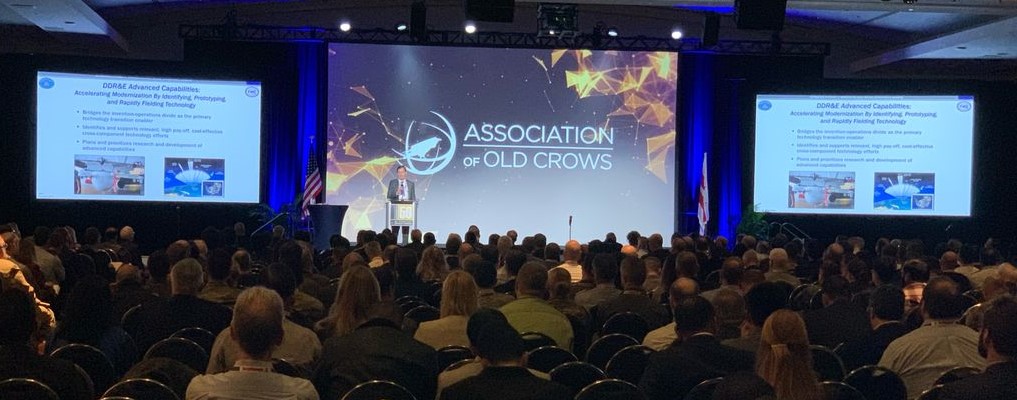OUSD Research & Engineering Director Outlines What's Coming in Advanced EW Development and Acquisition
 |
| James A. Faist, SES |
James A. Faist, SES, Director, Advanced Capability, OUSD Research & Engineering, began his keynote address on Tuesday morning by describing a new program from his office that was begun just last week. The Advanced Electronic Warfare Capabilities (AEWC) effort was launched with seven industry providers, with the aim of "getting industry ideas on those technologies they may have developed at DARPA, the Service labs, or on their own IRAD – look at them from a mission construct, at effectiveness, and then look at jointly with the Joint Staff and the Services to determine which will be our top prototyping priorities."
Observing that, "We can never assume that we have EW or spectrum dominance, the challenge is constant and daunting to maintain our position," Faist emphasized the need to get ahead of our adversaries in terms of acquisition. "Our adversaries are turning out new systems in 3-5 years vs. our 5-10 year cycles."
Faist says the solution rests with rapid prototyping of core capabilities. "With the mid-tier acquisition approach, we're really working hard to get that right. Noting that the Government desires "TRL-6 plus 30 months, as well as advanced capabilities that may need further development," Faist says they're looking at "How do we inject new technology into those programs as we go along? We also want to make sure we're placing our bets in the right areas to invest in, and to advance and prototype."
In terms of the discussion surrounding "transitioning capability to the warfighter," Faist says that, "As an engineer, what that really means is, we have to transition capability and technology in products lines produced by our supplier base into our systems. The idea is to look at what is 'the art of the possible' that then feeds into our requirements processes within the Pentagon before we start acquisitions."
For example, he notes that the AEWC is six months of study and then two years of technology development. "Two years is not a lot of time to do an RDT&E program on a whole new capability. So this implies that, as a provider you need to be pretty high in TRL to start with."
Among his responsibilities, Faist is the EW lead for R&E, and describes his group as the "technology-transition group," working at the TRL 4-7 levels. Faist emphasized that "great engineering is critical to enabling great system capabilities. When we don't do comprehensive engineering work up front, this is where we will run into problems."
Relating this to the ongoing work on changes to the DOD's 5000 acquisition document, which Faist says they are working diligently to finish by the end of this calendar year, he pointed out that, among the updates, "We recognized that there was really no role for a chief engineer, and we've changed that, making the chief system engineer a person with formal responsibilities of ownership of the technical baselines. And, we're also moving engineering products up much earlier in the life cycle."
Faist said they're committed to aligning their investment portfolios to the National Defense Strategy (NDS), with EW as one of their top investment priorities, particularly in terms of building the next generation of EW test assets.
With regard to mission engineering, Faist says, they're first focus is on solving the "hard problems." "We picked the top four hard problems we wanted to go after. We're looking at it as two constructs – building an integrated government reference architecture, but also involving industry early by looking at technologies that we can transition." According to Faist, they're getting ready to start on the integrated fires area, while fully-networked command and control communications will be held to the end. "This is the most complex area, and is the infrastructure and glue that really holds everything together."
Another effort started in the fall is the allied prototyping mission. "Our key allies are starting to participate at the mission level with us, and we're hoping to announce a major allied prototyping program before the end of the calendar year." – John Haystead